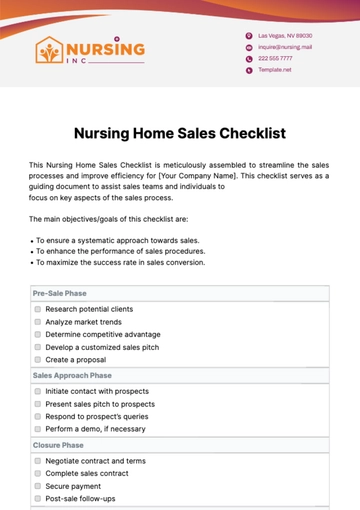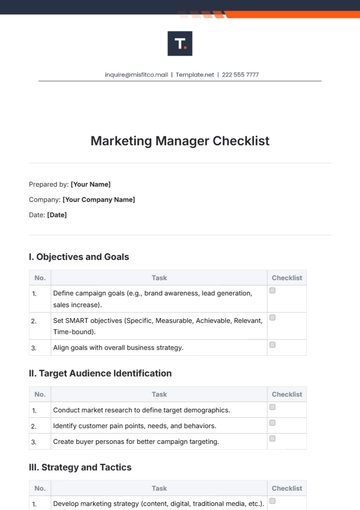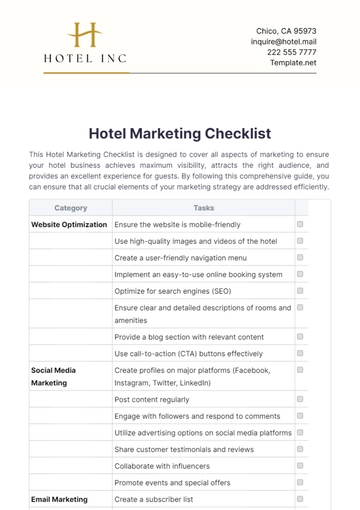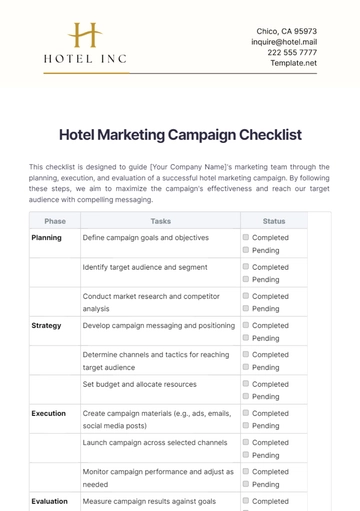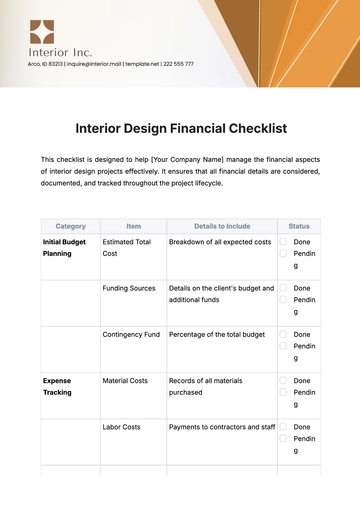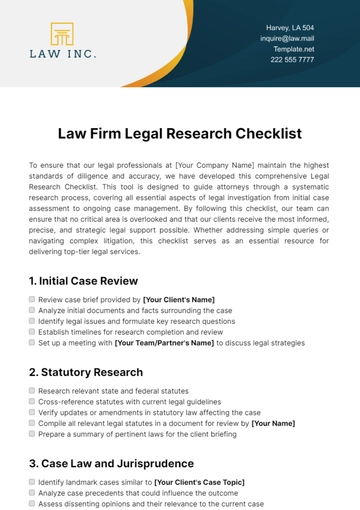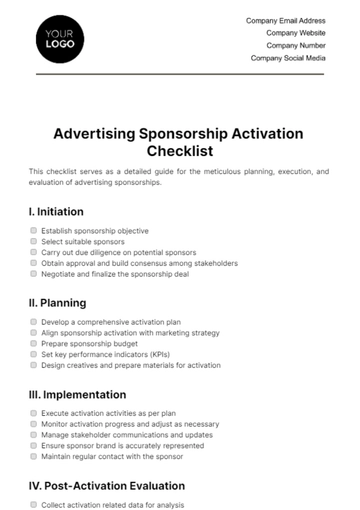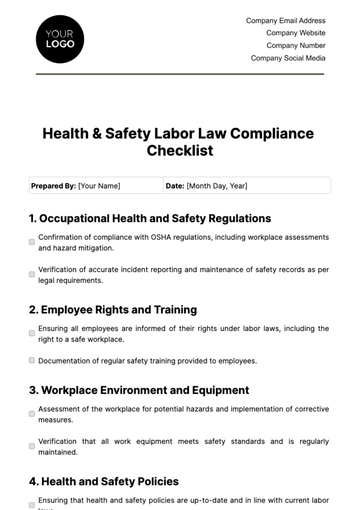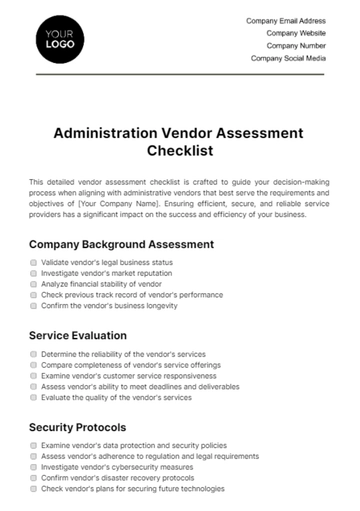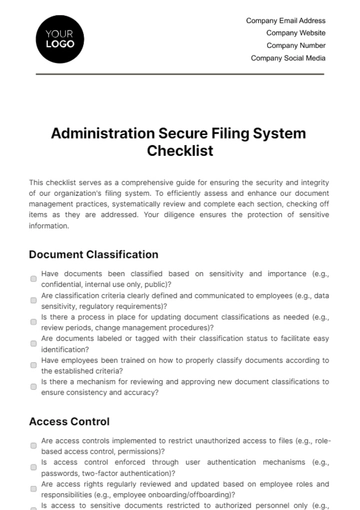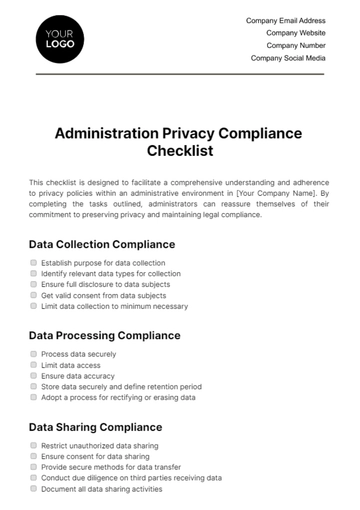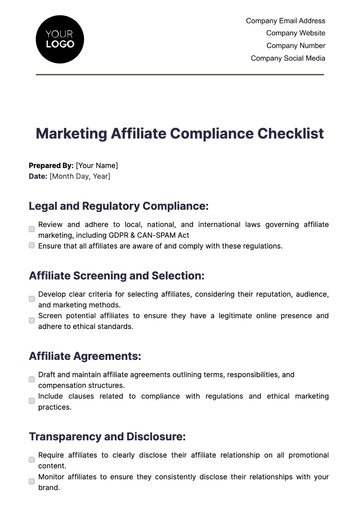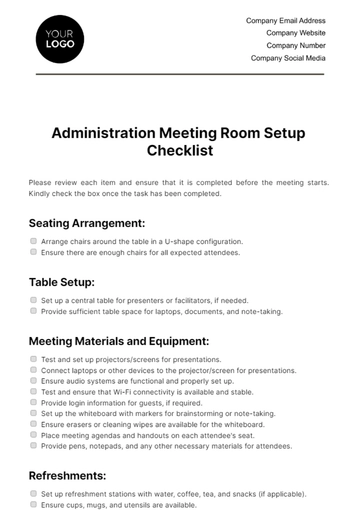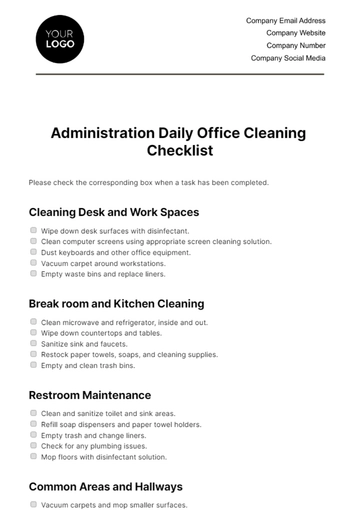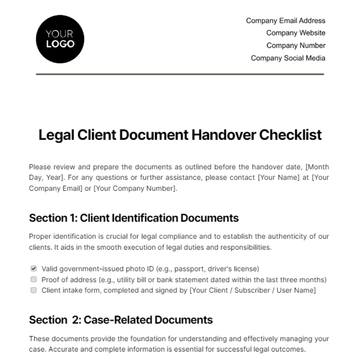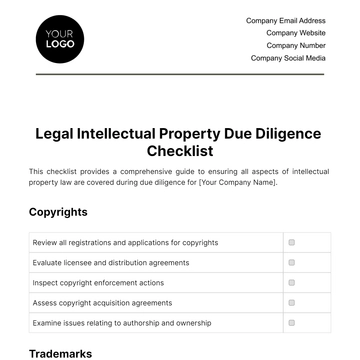Administration Secure Filing System Checklist
This checklist serves as a comprehensive guide for ensuring the security and integrity of our organization's filing system. To efficiently assess and enhance our document management practices, systematically review and complete each section, checking off items as they are addressed. Your diligence ensures the protection of sensitive information.
Document Classification
Access Control
Storage Infrastructure
Backup and Recovery
Retention Policies
User Training
Monitoring and Auditing
Compliance Requirements
Disaster Preparedness
Continuous Improvement
Is the filing system regularly reviewed and updated to address evolving security threats and business requirements?
Are security controls and procedures evaluated periodically to ensure their effectiveness and relevance?
Is feedback solicited from employees and stakeholders to identify areas for improvement in the filing system's security?
Are security awareness programs conducted to educate employees about emerging threats and best practices?
Are security incidents and near-misses analyzed to identify root causes and implement preventive measures?
Is there a process for benchmarking the organization's security practices against industry standards and best practices?
Administration Templates @ Template.net

